| Zeitschrift Umělec 2005/2 >> Semionautsvs vs. Demiurges | Übersicht aller Ausgaben | ||||||||||||
|
|||||||||||||
Semionautsvs vs. DemiurgesZeitschrift Umělec 2005/201.02.2005 Andrej Kovalev | Moskau Biennale | en cs |
|||||||||||||
|
Vain endeavors to find out the curators' conception constituted a real challenge for Moscow art critics. The curators pronounced mere words and shocked representatives of Moscow art community because after all, they revealed no intellectual accompaniment, which usually accompanies international events of this kind.
Hopes of Dialecticians The situation proved especially piquant as highly responsible people, a brilliant curatorial team invited to organize the Biennale, realized a concept, which was in the absence of concept. Rosa Martinez was art supervisor of the Istanbul Biennale and is going to prepare the Venice Biennale. Nicolas Bourriaud is director of the Palais de Tokyo in Paris. Hans Ulrich Obrist (Swiss/France) is curator of the Paris Museum of Contemporary Art, curator of the first Manifesta Festival, and member of curatorial group during the 50th Venice Biennale in 2003. Daniel Birnbaum (Sweden) is rector of the Schtedel Institute of Arts in Frankfurt-on-Maine, Germany. Iara Bubnova (Moscow) is head of the Institute of Contemporary Art in Sophia, Bulgaria. Biennale Curator and Coordinator Joseph Backstein is director of the Institute of Contemporary Art Problems and curator of Russian projects in Venice and Sao Paulo. At the least three of the group are not only "successful production workers" (Soviet terminology) but also certified intellectuals. Nevertheless, the Moscow Biennale turned out Diskursfreie Zone as one German critic said. It is quite possible that the branch of global production aiming at manufacture of new purports goes through obvious crisis of overproduction. Some remnants of the concept could only be found in a slogan Dialectics of Hope borrowed from contemporary Russian Marxist Boris Kagarlitsky. For a westerner, the slogan would rather be a reminder of Ernest Bloch with this Principle of Hope and belief in teleology of the world moving to perfection. The reference to Bloch creates a clear Utopian horizon, the one and only that fills human existence with meaning and purpose. One only might assume that in Moscow it was a question of Utopistische but not Utopische. One only can surmise that while working the curators discovered utopias disappearing from actual horizon and the slogan Dialectics of Hope began to bit by bit recede into the background. It is very likely that the reason lies in a decision to work with "young" artists. The problem was rather pragmatic. A final decision to conduct the Biennale main project in the Lenin Museum was made a month and a half before the opening. Waiting for approval of state funding was also protracted. At the same time, recognized in the world arena masters whose coming was so much anticipated in Moscow are always limited by a strict schedule. Thus, it was hardly possible to gather an impressive team of stars in a short space of time. Some of Moscow art community referred the decision to organize a "youth biennale" to some disregard of arrogant Europeans for retarded and odd remote land. Optimists were comforted by a thought that transnational art bureaucracy regarded Moscow as an important stage in the career of stars of XXI century. Zeroing of the Discourse Many of those who came to the opening in the Lenin Museum winced saying that everything was so pitiable and poor-quality. Indeed, there was nothing stunning, glorious, and dear to a big new Russian soul. Moscow viewers were categorically refused grand show. The exposition really looked unfinished, to put in mildly. Curatorial work was in fact absent. Most artists failed to competently use allocated space. Artist, critic, and indisputable Moscow authority Nikita Alexeyev expressed general impression of Moscow viewers, "The exhibition looks like an exhibition of term works of the Surikov Art Institute (Moscow State Academic Art Institute named after Vasily Surikov) students in Soviet period. It is equally meaningless and boring though made with different technology and in different circumstances." Two versions may be expressed about the fact that the majority of objects exhibited at the Moscow Biennale were unfinished and indefinite. The negative one: artists really did not know how to do it otherwise. The optimistic one: we had to do with a new esthetical concept, which taboos any distinctness. Now that rows and agitation somewhat settled we may say that traditional Russian disorder and unreliability were used by curators to declare a completely new configuration of contemporary art, which is fundamentally different from seemingly habitual art of 90s. First, it is easy to notice that curatorial group gently rejected an obvious appeal to exploit a "strong discourse" (Lenin and heritage of socialism). Instead, they preferred invisible and almost intangible substances of emptiness, collapse, and decay. Lenin Museum is a space in the center of typical Russian complicated dispute between property owners. It is logical to assume that mounting some rigid constructions in the place, which lost its past and has no definite future, would have been vain and ridiculous business. This logic is opposite to the logic of international exhibitions like EXPO, which host monumental though temporary phantom constructions. Sober-minded person aware of history will not build another Potemkin village but will try hard to fix and use specific character and style of the very place, the building, which stood empty during almost ten years and which is an ideal space for art squat. With real Gallic logicality Nicolas Bourriaud brought this strategy to perfection in his concept of Relational Aesthetics realized in Palais de Tokyo. As for theoretical justification of a new function of artist in modern society, the same Bourriaud gave the best explanation of it in his interview in Moscow, "Artist ceased to be a demiurge before whom you must kneel. Artist becomes a "semionaut" who invents trajectories between all existing signs. Scope of activity shifted from production to postproduction." Diskursfreie Zone To begin with, emphasizing national and cultural identity in such context would be unbecoming to an artist. A slight accent showed up by everyone when speaking common language even smoothes away difficulties of communication. Furthermore, it is possible to state that strategy of identity is directly dictated by neo-imperial discourse. A strong instruction to identify oneself usually comes from imperial center and does not relate to empire inhabitants. The appeal of Rosa Martinez to "get rid of dominants of old centers, of domination of New-York, Paris, or Venice" can be interpreted from this point of view. The meaning of the new European project is global world without frontier. This strategy bears a strong resemblance to a permanent fight between Euro and Dollar. Contemporary artists in a majority avoid large-scale ideas, pompous manifests, and big concepts. Their sphere is private observations, marginalia, and notes. If in the course of 80s and 90s all artists were looped by the idea of national identity, now we see that differences between national schools have been completely erased. This is why it is in principle impossible to identify at once national and cultural affiliation of the author of "frozen room" and "machine that makes toys out of light." Micol Assael (Italy) constructed a refrigerating room with walls covered with hoarfrost. According to her, there is a philosophic idea of art, which extracts energy from environment just as a refrigerator. Her Moscow coeval Rostan Tavasiev built a somewhat awesome machine, which comes alive every several minutes and a teddy bear drops out of its depth. Any philosophic background is fundamentally absent from this fundamentally infantile work. Another thing is more important, namely, young artists simply solve their purely personalistic problems, which bear no relation to identity or globalism. Furthermore, it seems that epoch of general enthusiasm for high technology is coming to naught as artists openly demonstrate their adherence to low-tech. Installation Satellite by Michael Beutler is a rural looking apparatus. It produces beautiful but extremely meaningless long slats wrapped in motley threads. They hamper passage and are evidence of the fact that "production for the sake of production" is coming to take the place of "art for the sake of art." As for notorious "identity," its residual elements can only hardly be observed in works of a bit older artists. Pilar Albarracin with her vamp who tries to hide from the fire of repressive attraction clearly appeals to specific Spanish variant of gender relations. The Ural group Siniye Nosy (Blue Noses) appeals to popular views of Russian brutality, respectively. However both Albarracin and the Siniye Nosy only insist on total triteness of all possible analytical approaches to art. Gender of Spanish artist loses any intellectual content and turns out a boring and annoying game of social roles. Russian jokers heroically reduce all possible intellectual discourses to a trash farce. In trash boxes filled with flickering personages they heaved all discourses of 90s – Flesh, Politics, Aggression, and so on. It is not at all by chance that exactly their project sets the general modus of the whole exposition in the Lenin Museum. For example, in Santiago Sierra's photo performance Coating 18 Women with Polyurethane possible danger for bodies of models is averted due to thick spreads. So, polyurethane is applied on thick cloth, not on bodies. Actresses wear thick bathing suits, which can be interpreted as disavowal of bacchanalia of flesh started by Vienna actionists. From now on, body does not stand for object and subject of art. Nevertheless, some everyday risk still exists for contemporary art amateurs. Bricks and other heavy things from a mobile made by Sam Durant (US) strive to come like a bolt from the blue on heads of visitors climbing the stairs of the Lenin Museum. And it is only mobile's name The Old Mole of History that hints at presence of the Big Discourse referring to a famous saying by Karl Marx. Direct political and social analytics is moved to zones of maximum banality. This why it looks as the weakest spot of the main exposition though it does attract the attention of political journalists. It even concerns a brilliant fresco by Alexey Kalima, which explicates mass media ideas of the main point of the Chechnya war too directly. The problem is not even that taboo zones such as Putin, Chechnya, religion, and so on were represented before the curators. Zero artists refuse flatly to discuss global problems as such as Shao Fei (China) did having exhibited plastic models of sculptures of Dan Siaopin created by her social realist father. Production of new meanings is thoroughly coded and separated from production of visual images. Even perception of obviously provocative project by the Zhelatin (Gelatin) group demands particular training. Only after careful scrutiny a viewer can discover that a queue on a skillfully modified museum photo moves not to the Mausoleum but to a toilet. The toilet in Russian rural style is installed in a museum window and a viewer can use it thus participating in creation of new gesamtkunstwerk (eng. fusion of different arts). A great fight against the Society of Consumption has also lost its meaning by now: monumental household goods by Subodh Gupta (India) do not unmask repressive consumerism anymore. The installation by Hindu artist who gently indulges petty-bourgeois passion for possession of beautiful and shining things could be moved to IKEA store without any violence to the context. The manifest is explicit and sharply defined. Within the frameworks of neocolonialist ethics of identity the artist should have stopped on airport exotics style. For Moscow at its supreme stage of over-consumption Gupta's appeal sounds embarrassingly, "Against repressive boutique, for democratic IKEA!" In spite of many doubts and reservations the meeting of the Russian society with contemporary art did happen. The society is not quite aware of it, though. Still official statistics looks almost satisfactory: 1500 visitors at weekends and 600 at workdays on average. It is necessary to mention administrative aspect too because all initiatives providing for collaboration with the city environment were rejected on various pretexts. It is possible that Moscow, which suffered without complaint from freaks of performance-artists of 90s, now rejects even much more peaceful projects. Any gesture in social space looks like a pure terrorism. Russian Utopia and Subconsciousness of the West Turning back to the Dialectics of Hope, for Russian public the name sounded like a possibility to realize a great dream of junction with the world context. When it finally happened they began to view the First Moscow Biennale as personification of destroyed hopes. The trouble is arrogant Europeans refused to take into consideration all phobias, fears, and complexes linked with mythologema of eternal Russian isolation from the world culture. Personally I do not know whether it is good or bad. I only can say that I feel some relief due to long-awaited liberation of monumental discourse and repressive visuality. Biennale effect was unexpected – those theorists, artists, and organization men who were growing monumental visuality and fighting for the "correct" discourse during 90s found themselves at the edge of progress. As a result, trying to practice the most popular theoretical mistakes and draw near to viewers at once Moscow art grew more and more bourgeois and glossy. In this situation, the voices of critics who were interested in manipulations with so-called international discourse, which the international curatorial team implemented, were lost in a chorus of glorification about Biennale parallel events. And because of that, annoying suspicion arises that Moscow, which sinks into strange isolationism, does not wish to spend time on different abstract matters. Nevertheless, the Biennale hosted very optimistic phenomena too. During fifteen years, people in charge of contacts with the West repeated over and over again that there were no art institutions in Russia. All of a sudden it turned out that there was no place to hide from these institutions. Even exhibition-hardened critics openly complained of fatal impossibility to visit and describe all interesting places from the number of Biennale parallel projects. Meanwhile it turned out though that Moscow art situation has been aiming at energetic publicistic expression and direct contact with a viewer since 60s. This old-fashioned aim paid for with many prices has not lost its charm and ingenuousness until now. This is why in any context Ilya Kabakov looks so up-to-date that he needs not context at all. Moreover, reconstruction of his first total installation Sixteen Ropes after twenty years since its creation could freely be transferred and included into the composition of the main project. Ilya Kabakov demonstrated what a real star of the classics should look like. As for new and equally outstanding stars, Russia has serious problems in their production. A project loudly titled Starz at the Branch of the Contemporary Art Museum in Ermolaevsky lane really looks brilliant. It includes the very best – Oleg Kulik, Vladimir Dubosarsky and Alexander Vinogradov, the AES+А group, and Vladislav Mamyshev-Monroe. Brilliant and admirable, they somehow evoke unpleasant thoughts about artificial jewelry, which is emphasized by consonance of Starz and "straz" (eng. paste, artificial diamond). But for all that each of participants is worthy of being named a star and idol. It is impossible not to say that though some joyless irony can be revealed in the name still a portion of joke seems insufficient. The very location of the exhibition redoubles the situation. Real stars should be in a real museum of contemporary art but not in a simulation built by a master of imperial kitsch Zurab Tsereteli. In Russia, in no way can contemporary art stars feel themselves independent figures able of developing own contexts. So, in spite of all nascent problems, Moscow confirmed its new status on the world art map. Or, using a widespread slang, it became the place worth visiting. It is very likely that this very transition status was used by curatorial team for complicated and almost elusive experiment with discourse. It is also possible that such an approach is my personal aberration considering that I am a provincial critic. Nevertheless, I think that basic status of art of zero years was determined in Moscow. My native city again found itself ahead of the fulgent steam-engine of progress, which heats up my patriotic feelings. However the overall situation is far from marvelous and perfect. It may be well that by the moment of this issue of Umelec appearance we will learn that organizers of exhibition Watch out! Its Religion! were sentenced to imprisonment for "stirring up religious and international discord." ---- *Semionaut The contemporary artist is a semionaut, he invents trajectories between signs. (From Nicolas BOURRIAUD - RELATIONAL AESTHETICS – GLOSSARY)
01.02.2005
Empfohlene Artikel
|
|||||||||||||
|
04.02.2020 10:17
Letošní 50. ročník Art Basel přilákal celkem 93 000 návštěvníků a sběratelů z 80 zemí světa. 290 prémiových galerií představilo umělecká díla od počátku 20. století až po současnost. Hlavní sektor přehlídky, tradičně v prvním patře výstavního prostoru, představil 232 předních galerií z celého světa nabízející umění nejvyšší kvality. Veletrh ukázal vzestupný trend prodeje prostřednictvím galerií jak soukromým sbírkám, tak i institucím. Kromě hlavního veletrhu stály za návštěvu i ty přidružené: Volta, Liste a Photo Basel, k tomu doprovodné programy a výstavy v místních institucích, které kvalitou daleko přesahují hranice města tj. Kunsthalle Basel, Kunstmuseum, Tinguely muzeum nebo Fondation Beyeler.
|







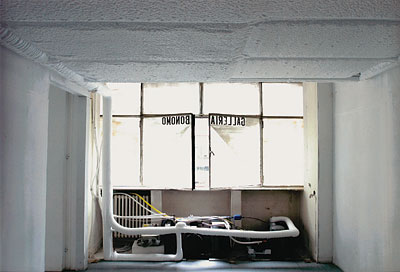

















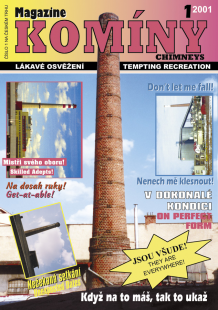




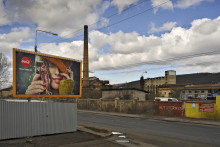
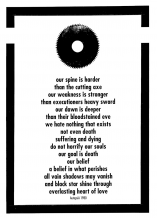

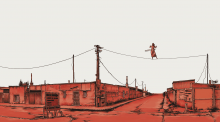


 We Are Rising National Gallery For You! Go to Kyjov by Krásná Lípa no.37.
We Are Rising National Gallery For You! Go to Kyjov by Krásná Lípa no.37.
Kommentar
Der Artikel ist bisher nicht kommentiert wordenNeuen Kommentar einfügen